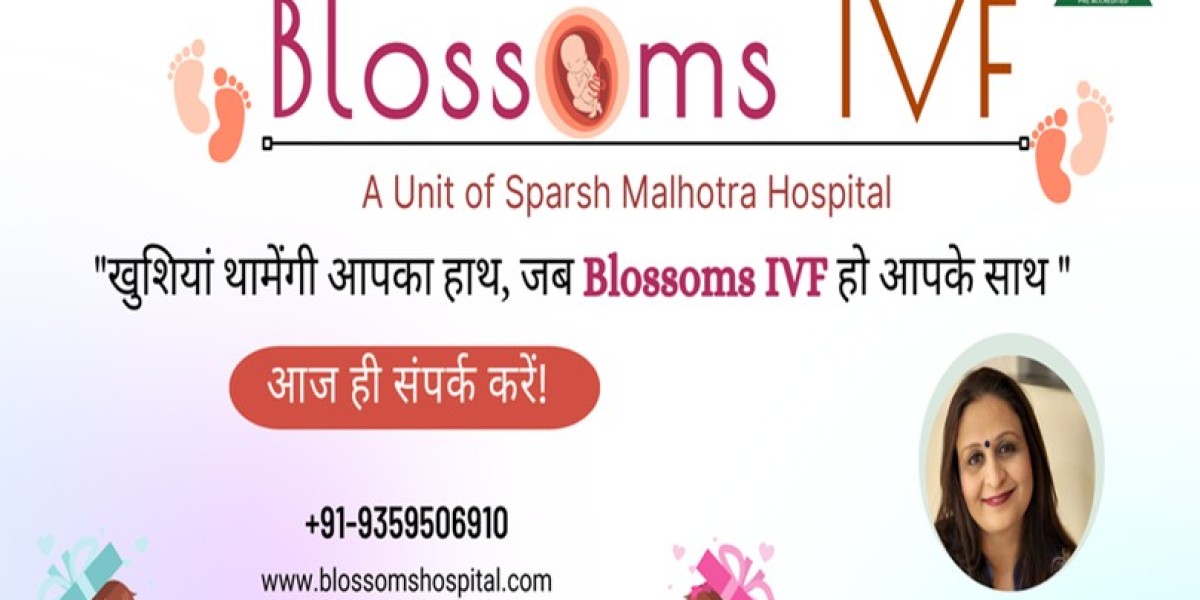When discussing infertility treatments, terms like IVF (In Vitro Fertilization) and Test Tube Baby often come up. Many people believe they are two different procedures, but in reality, they refer to the same fertility treatment. The term "Test Tube Baby" was historically used when the first successful IVF baby, Louise Brown, was born in 1978. However, medically, IVF is the correct term used by fertility experts today. In this blog, we will clarify the difference between these terms, explain the IVF process in detail, and highlight how the Best IVF Centre in Agra provides world-class fertility treatments to help couples achieve parenthood.
Understanding IVF and Test Tube Baby
IVF, or In Vitro Fertilization, is an advanced assisted reproductive technology (ART) that helps couples facing infertility conceive a baby. It involves retrieving eggs from a woman’s ovaries, fertilizing them with sperm in a controlled laboratory environment, and transferring the healthiest embryo into the uterus for implantation. The term "Test Tube Baby" became popular because the fertilization process occurs outside the body. However, the fertilization does not actually take place in a test tube but in a petri dish. The term "Test Tube Baby" is not a separate medical procedure; it is simply a non-scientific name for a baby born through IVF.
Step-by-Step Process of IVF Treatment
The IVF process involves several steps, which typically take around four to six weeks to complete.
1. Initial Consultation and Fertility Tests
The first step in IVF is a detailed consultation with a fertility specialist. The doctor reviews the couple’s medical history and recommends tests such as blood tests, ultrasound scans, and semen analysis to determine the cause of infertility.
2. Ovarian Stimulation
To increase the chances of success, the woman is given hormone injections for about 10-14 days to stimulate the ovaries to produce multiple mature eggs. During this phase, regular monitoring through ultrasounds and blood tests ensures that the eggs are developing properly.
3. Egg Retrieval (Oocyte Retrieval)
Once the eggs are mature, a minor surgical procedure called follicular aspiration is performed under light anesthesia. A thin needle is inserted through the vaginal wall into the ovaries to collect the eggs. This procedure is painless and takes about 15-20 minutes.
4. Sperm Collection and Fertilization
The male partner provides a sperm sample, or donor sperm is used if necessary. The healthiest sperm are selected and combined with the eggs in a petri dish for fertilization. In some cases, Intracytoplasmic Sperm Injection (ICSI) is performed, where a single sperm is injected directly into an egg to enhance fertilization.
5. Embryo Culture and Selection
After fertilization, the embryos are cultured in the laboratory for 3-5 days to develop. The embryologists monitor their growth and select the highest-quality embryo for transfer.
6. Embryo Transfer
A healthy embryo is transferred into the woman’s uterus using a thin catheter. This procedure is simple, painless, and does not require anesthesia. The remaining good-quality embryos can be frozen for future use.
7. Pregnancy Test and Follow-Up
After 10-14 days, a blood test (Beta hCG test) is performed to confirm pregnancy. If successful, the woman continues to receive hormonal support to maintain a healthy pregnancy.
Is There Any Difference Between IVF and Test Tube Baby?
Despite the common misconception, there is no difference between IVF and Test Tube Baby. The term "Test Tube Baby" is just an outdated term for babies conceived through IVF. Since the fertilization process happens in a petri dish and not in a test tube, IVF is the scientifically correct term. Today, medical professionals and fertility specialists prefer using IVF to avoid confusion.
Why is IVF Recommended for Infertility?
IVF is a highly effective treatment for couples facing various infertility issues, such as:
- Blocked Fallopian Tubes – IVF allows fertilization to occur without requiring open fallopian tubes.
- Male Infertility – Low sperm count, poor motility, or sperm abnormalities can be treated with ICSI.
- Unexplained Infertility – When no clear reason for infertility is found, IVF increases the chances of conception.
- Polycystic Ovary Syndrome (PCOS) and Endometriosis – IVF helps women with reproductive disorders conceive.
- Age-Related Infertility – Women over 35 years old can benefit from IVF as egg quality declines with age.
Cost of IVF Treatment in India
The cost of IVF treatment varies depending on the medical condition, clinic, and additional procedures involved. The average cost of an IVF cycle in India ranges from ₹1,50,000 to ₹2,50,000. Additional costs may apply for procedures like ICSI, embryo freezing, or genetic screening. Some couples may require multiple IVF cycles, increasing the overall cost. However, selecting the Best IVF Centre in Agra ensures affordability without compromising on success rates.
Why Blossoms Hospital is the Best IVF Centre in Agra?
Blossoms Hospital has established itself as the Best IVF Centre in Agra due to its high success rates, advanced fertility treatments, and experienced medical team. The hospital provides personalized fertility solutions tailored to each patient’s needs.
1. Experienced Fertility Specialists and Embryologists
Blossoms Hospital has a team of highly skilled gynaecologists, fertility specialists, and embryologists who are experts in handling complex infertility cases.
2. Advanced Fertility Technologies
The hospital is equipped with state-of-the-art IVF labs offering ICSI, embryo freezing, laser-assisted hatching, and Preimplantation Genetic Testing (PGT).
3. Personalized Patient Care
Each couple receives individualized treatment plans, emotional support, and counseling throughout their IVF journey.
4. High IVF Success Rates
With modern techniques and high-quality embryo selection, Blossoms Hospital has one of the highest IVF success rates in Agra.
5. Affordable and Transparent Pricing
The hospital offers cost-effective IVF packages with flexible EMI options to make fertility treatment accessible to all.
6. Positive Patient Testimonials
Many couples have successfully conceived at Blossoms Hospital, making it the most trusted IVF center in Agra.
Conclusion
While IVF and Test Tube Baby are often thought to be different, they are actually the same. The term Test Tube Baby is a non-medical term used historically, whereas IVF is the correct scientific name for the procedure. IVF has helped millions of couples worldwide achieve their dream of parenthood.
Blossoms Hospital, recognized as the Best IVF Centre in Agra, offers world-class fertility treatments, high success rates, and compassionate patient care. If you are struggling with infertility and seeking expert guidance, consulting with Blossoms Hospital can be the first step towards fulfilling your dream of having a baby.
? Contact us today for an appointment and take the first step towards parenthood! ?
Would you like additional details about a specific IVF procedure or financial options? Let me know how I can help!



